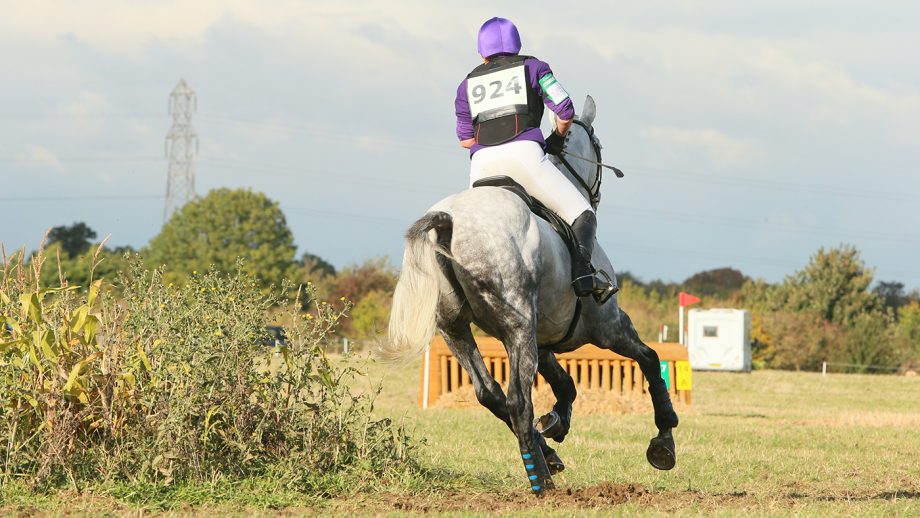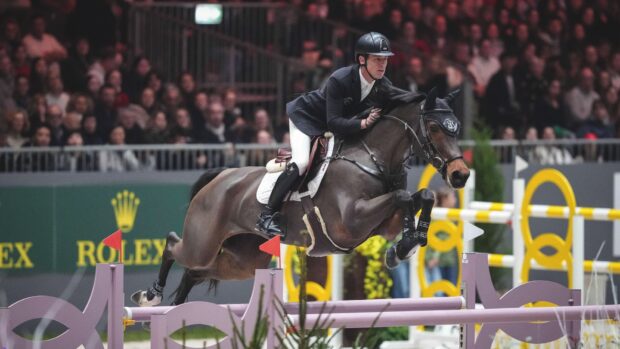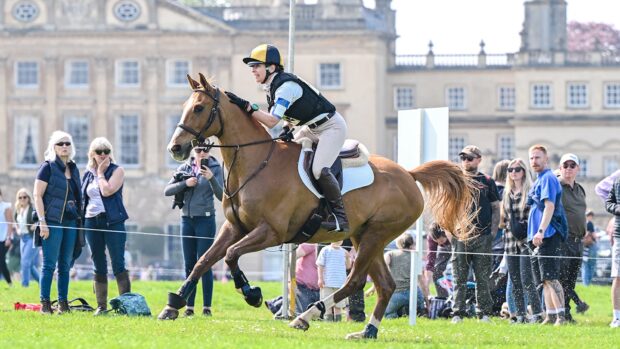A ratings system designed to complement existing safety standards and fill the gaps relating to concussion risks has been cautiously welcomed – and questioned – with experts advising riders to look at the whole picture when choosing a riding helmet.
The Virginia Tech Helmet Lab, which has been rating helmets for different sports since 2011, has released its first STAR (Summation of Tests for the Analysis of Risk) evaluation system for equestrian sport.
The focus is on assessing which helmets best reduce concussion risk, and the testing process works by translating metrics from real-world head impacts into evidence-based test methods to assess performance under realistic conditions.
A total of 40 riding helmets were tested, and ratings published online this month. Two earned the top score of five stars, 11 earned four, and the rest three stars or below – and retail price was not necessarily a reflection of performance under this system.
“Standards for equestrian helmets are typically based on severe impacts,” said Stefan Duma, Helmet Lab founder and Virginia Tech’s Harry Wyatt professor of engineering. “What we found is that a lot of riders come off at lower velocities, and many helmets are too stiff to effectively cushion those softer impacts. The helmets that perform better are able to deal with different energy levels.”
To develop the system, researchers analysed more than 100 videos of rider falls. They measured the hardness of sand, dirt, grass and synthetic surfaces at equestrian events, and took equipment, including dummy heads, necks and pendulums, to Virginia Tech’s equestrian facilities to simulate falls.
Data was taken back to the lab to recreate falls in controlled, quantitative tests, which used to assess the helmets.
“With every sport, we go through detailed analysis to make sure that the biomechanics we’re testing relate specifically to those athletes,” said Professor Duma.
“For these ratings, we determined what the acceleration profile would look like for a rider falling on the ground. Then we take that trace and bring it into the lab and recreate it, to make sure our testing matches what a rider would experience if they fell off a horse.”
He said “the real key” is that the system “provides a framework for manufacturers to make better helmets”.
“They can look at our analysis, recreate that testing, and optimise their helmet design to make the best helmet possible,” he said.
“That’s going to be better for consumers as well as manufacturers. Ultimately, we hope to reduce the number of injuries.”
The research was funded by private donors, led by Jacqueline Mars, plus the US Hunter Jumper Association, US Equestrian (USEF) and US Eventing.
The Champion Revolve X-Air MIPS helmet – the only Champion hat tested – topped the ratings.
“Champion has always been safety first in terms of our design, it’s our top priority,” Ben Hanna, production engineer at Champion Manufacturing Group, told H&H.
“We’ve always been trying to push to maintain the highest levels. It shows all the effort we put in over the years has paid off.”
He added that Champion knew Virginia Tech was working on a equestrian rating system, but did not know which, if any, of its helmets had been tested.
He said the ratings system gives interesting insight into how helmets that meet the top standards, designed to test for protection against catastrophic, life-changing injuries, perform in other situations.
“I think it’s important to understand that the Virginia Tech STAR ratings are specific to their test, as any rating system is,” he said. You can only score helmets against what you’ve tested for, but it provides that extra layer of insight and when choosing a helmet, from a safety point of view, look at the whole picture and not just one individual test.”
He added: “So I think for people who are looking to buy a new hat and want to know how to interpret these results, our position would be that the Virginia Tech STAR rating is a useful indicator of helmet performance.
“If people are looking for the safest helmet, they should look for a well-fitting helmet that is comfortable and that they will wear every day. Because you may have the safest helmet on the planet, but if it’s uncomfortable and you don’t wear it, it’s not going to do any good.
“You want it to be rated to [an approved standard] like PAS 015 or the latest SNELL standard. And I would definitely support the motion that you should get a MIPS hat, because it adds that extra layer of protection. Then look at the Virginia Tech STAR ratings.”
Other industry figures have also welcomed the research – while raising questions about the system.
MIPS, the multi-directional impact protection system, which is included in certain helmets and intended to help reduce harmful rotational motion, “welcome the new benchmark […] yet aspects of the test and rating methods leave room for improvement”.
“While we appreciate the new initiatives to evaluate equestrian helmets and promote helmet safety more generally, we at MIPS believe that the new rating systems may be cause for confusion,” said the MIPS statement.
Manufacturer Charles Owen, which had four helmets tested with varying results, also welcomed and questioned the system.
“We appreciate the Virginia Tech findings in relation to low-velocity impacts. However, it’s important to highlight the potential issues in basing research methods on social media videos of accidents,” said a statement from Charles Owen.
“The three main international safety standards of VG1, PAS:015 and ASTM incorporate low-velocity impacts as seen in this study, as these do play a role in everyday accidents.
“However, there are also crucial tests, such as spike tests, rotational tests, crush tests and hazard edge tests that also need to be considered when evaluating helmet safety.
“These tests are peer-reviewed and developed over many years by medical consultants, industry experts and PhD researchers to replicate major causes of rider head trauma and concussion.
“We encourage all riders to ensure their helmets meet a minimum of three safety standards [PAS:015, VG1 and ASTM] as this ensures your helmet has been tested against nine different accident scenarios. As every rider will know, every accident is different in the levels of force, speed and angle involved.
“The helmet study by Virginia Tech focuses on just one potential cause of concussion. While this can be useful to simplify the science, we advocate that consumers dig deeper to understand the accepted industry standards for themselves.”
Responding to Charles Owen’s statement, Barry Miller, the helmet lab’s director of outreach and business development, told H&H the lab uses a “wide array of data sources”, which include injury reports from sporting organisations such as USEF, the national injury database, and more.
“But without video footage, all of these methods are still incomplete,” he said.
“There are more than 50,000 [US] emergency room visits from equestrian accidents every year, but few have video footage to corroborate the details of the accident. The videos we’ve used are primarily from sanctioned equestrian events and many could have been posted to social media.
“While we might not be able to use advanced computer analyses for each unique video, we can certainly add them to a growing catalogue of rider falls.”
He added that the lab welcomes videos from all sources to help “understand and quantify fall characteristics”.
“Our STAR testing and methods have been approved by the Institute of Medicine, one of the highest scientific bodies in the country,” he said. “The STAR ratings have also proven to help manufacturers improve helmet designs [in other sports] that in turn reduced real-world concussions. We look forward to seeing these improvements that take helmet safety to the next level.”
You might also be interested in:

5 reasons why a subscription to HorseandHound.co.uk makes the perfect last-minute gift

Competition hat rules: find out what’s changing in 2022 and 2023

Is your hat up to standard? Check out the latest riding hat rules for competition
Horse & Hound magazine, out every Thursday, is packed with all the latest news and reports, as well as interviews, specials, nostalgia, vet and training advice. Find how you can enjoy the magazine delivered to your door every week, plus options to upgrade your subscription to access our online service that brings you breaking news and reports as well as other benefits.




